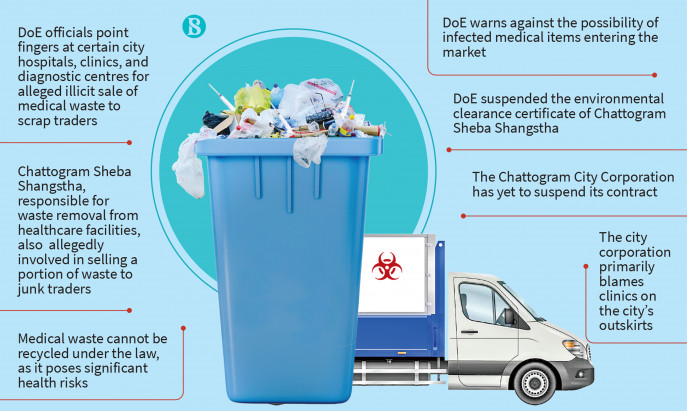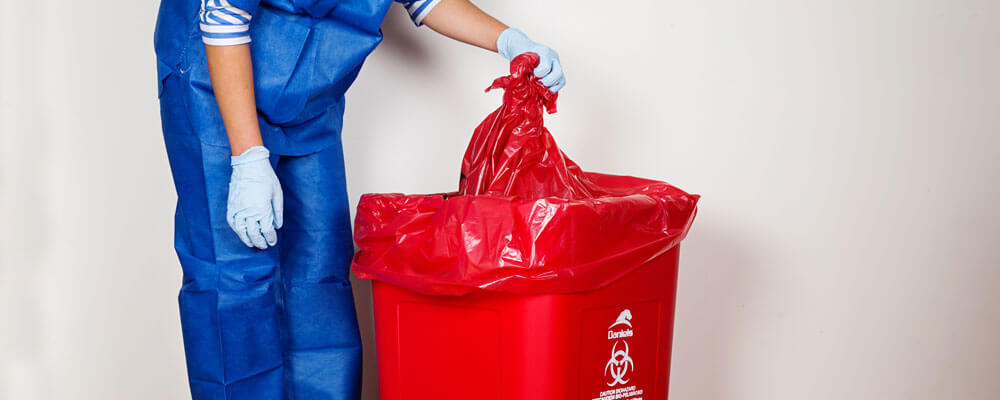Security First: Your Guide to Responsible Medical Waste Removal Services
Security First: Your Guide to Responsible Medical Waste Removal Services
Blog Article
Keep Ahead of Regulations: Professional Suggestions on Medical Waste Disposal
In a world where the health care sector is frequently developing, it is imperative for medical facilities to stay ahead of guidelines when it comes to the proper disposal of medical waste. With strict guidelines and regular governing changes, it can be challenging to navigate the complexities of this process. However, with professional recommendations, centers can make sure conformity and alleviate risks related to incorrect waste disposal. From understanding the different classifications of clinical waste to executing the best collection and segregation techniques, this discussion will provide workable ideas and important insights to aid centers remain ahead of laws in the ever-changing landscape of clinical waste disposal.
Recognizing Clinical Waste Categories
Understanding clinical waste categories is crucial for appropriate disposal and management in health care centers. Medical waste describes any waste produced by healthcare activities that might position a danger to public health or the atmosphere. It is crucial to categorize clinical waste accurately to ensure its secure handling, disposal, therapy, and transportation.
There are a number of groups of clinical waste that healthcare facilities require to be acquainted with. The most common classifications consist of transmittable waste, pathological waste, sharps waste, pharmaceutical waste, and chemical waste. Each category has particular standards and laws for its appropriate administration and disposal.
Transmittable waste consists of materials contaminated with blood or other physical liquids, such as handwear covers, dress, and research laboratory cultures. Pathological waste refers to human tissues, organs, or body parts that need unique handling and disposal. Sharps waste consists of made use of needles, syringes, and various other sharp things that can create injury and send infections. Drug waste comprises expired, unused, or contaminated drugs that need careful handling and disposal. Chemical waste includes solvents, disinfectants, and various other chemical compounds utilized in health care centers.
Staying Up-To-Date With Regulatory Modifications
Staying current with governing adjustments is critical for medical care centers to make sure compliance and proper management of clinical garbage disposal. medical waste removal service. With policies constantly advancing, it is crucial for health care facilities to stay updated to prevent penalties, penalties, and prospective harm to the setting and public health and wellness
To stay in advance of regulative changes, medical care centers should develop a system for tracking and monitoring updates. This can be done by registering for regulative e-newsletters, going to workshops and seminars, and actively joining industry organizations. Additionally, centers ought to mark a team member or team liable for staying notified and disseminating info to relevant stakeholders.
Routine interaction with regulatory firms is also crucial. Healthcare facilities need to establish partnerships with local, state, and federal firms to ensure they understand any changes in laws that may affect their waste management methods. This can be done via regular meetings, engagement in public comment periods, and positive involvement with regulatory companies.
Furthermore, health care facilities need to consider partnering with waste monitoring companies that concentrate on medical garbage disposal (medical waste disposal services with WasteX). These firms are often skilled in the most current laws and can provide assistance and assistance to make sure conformity
Implementing Proper Collection and Segregation Techniques
To successfully take care of clinical garbage disposal, health care facilities should establish appropriate collection and segregation techniques according to regulative guidelines. Executing these techniques guarantees the safe handling and disposal of potentially hazardous materials, protects the environment, and minimizes the threat of infections and injuries to medical care employees and the public.
Appropriate collection and segregation methods involve using marked containers and classifying systems. Health care facilities should provide plainly identified containers for different sorts of clinical waste, such as sharps, transmittable waste, pharmaceutical waste, and non-hazardous waste. These containers must be color-coded and clearly marked to prevent confusion and advertise simple identification.
Additionally, medical care centers ought to train their team on the right procedures for accumulating and setting apart medical waste. This includes enlightening them on the different sorts of waste, the ideal containers to utilize, and the importance of adhering to laws and guidelines. Regular training sessions and refresher course courses need to be carried out to ensure that employee continue to be updated on ideal methods.
Furthermore, medical care facilities must establish a system for routine collection and disposal of medical waste. This might entail partnering with certified waste monitoring business that concentrate on medical garbage disposal. These companies will make certain that the gathered waste is transported and taken care of in compliance with regulative demands.
Picking the Right Disposal Methods

Incineration is just one of one of the most effective and common approaches for throwing away certain kinds of medical waste, such as pathological waste and sharps. It helpful resources entails the controlled combustion of waste at heats, minimizing it to ash. Incineration can release damaging pollutants right into the air and add to air pollution.

Various other disposal techniques consist of chemical therapy, microwave treatment, and landfilling. Chemical treatment entails using chemicals to disinfect and counteract the waste. Microwave therapy utilizes microwave power to warmth and disinfect the waste. Landfilling involves hiding the waste in an assigned land fill location (medical waste disposal services with WasteX). Landfilling should be the last hotel due to the possible risk of contamination to dirt and groundwater.
Making Certain Compliance Through Documents and Training
After meticulously considering the ideal disposal methods for clinical waste, healthcare centers have to make sure conformity with laws and minimize environmental influence by carrying out reliable documentation and training procedures. This action is vital in maintaining a safe and lasting environment for both medical care look here employees and the general public.

Medical care employees that take care of clinical waste must obtain suitable training on waste partition, handling, and disposal treatments. By providing comprehensive training, healthcare facilities can empower their staff to make informed choices and decrease the threat of inappropriate waste disposal.
Verdict
In verdict, remaining in advance of guidelines in medical waste disposal is essential for healthcare facilities. medical waste removal service. Understanding the different groups of clinical waste, staying updated with governing adjustments, carrying out appropriate collection and segregation approaches, selecting the suitable disposal methods, and ensuring conformity with documentation and training are all essential actions. By complying with these guidelines, medical care organizations can effectively take care of and dispose useful source of medical waste in a responsible and secure way
From understanding the various categories of clinical waste to executing the right collection and partition methods, this conversation will give workable tips and beneficial insights to aid facilities remain in advance of policies in the ever-changing landscape of clinical waste disposal. - medical waste disposal services with WasteX
The most common categories include contagious waste, pathological waste, sharps waste, pharmaceutical waste, and chemical waste. Medical care centers should provide clearly identified containers for different types of clinical waste, such as sharps, contagious waste, pharmaceutical waste, and non-hazardous waste. Medical care centers need to develop a thorough system to record and track all aspects of medical waste disposal, including types of waste generated, quantities, and disposal methods used. Healthcare employees that take care of clinical waste needs to obtain ideal training on waste partition, taking care of, and disposal treatments.
Report this page